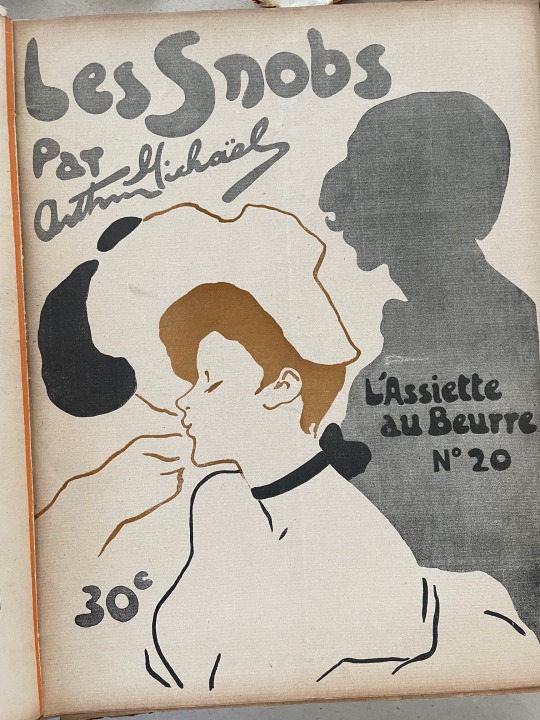#fin de siecle
Photo
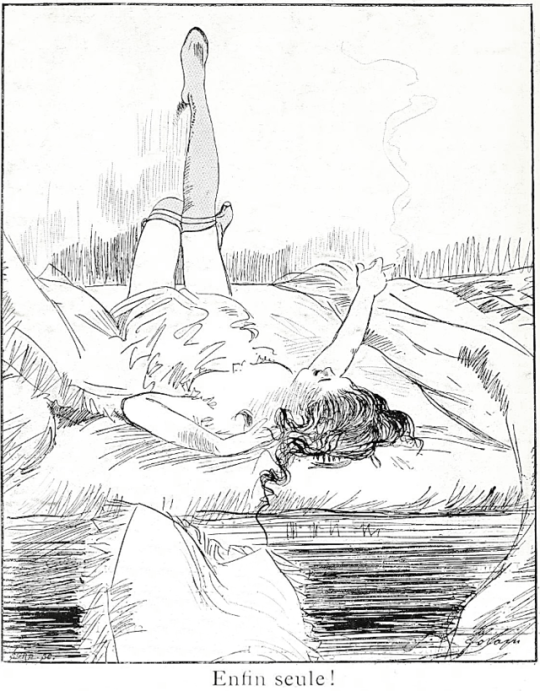
Enfin Seule! (Finally Alone) by Jean-Louis Forain in Le Courrier Français, ca. 1890
#fin de siècle#1890s#victorian#jean-louis forain#comics#illustration#1890#victorian era#fin de siecle
13K notes
·
View notes
Text



Sascha Schneider, 1905.
1K notes
·
View notes
Text

lost klimt portrait shows up in vienna :0
Fräulein Lieser ("Miss Lieser") has never been on public display since its creation in 1917 - you are now looking at the painting in color for (probably) the first time ever.
The current owner inherited the painting in 2022 - it originally came to be in the possession of their predecessors in the 1960s, but it is unclear how the painting came to be in the first buyer's possession. There is no information available about whether or not the painting had to be relinquished, was confiscated or sold under distress by the Lieser family after 1938. However, since the potential original owners were both forcibly dispossessed in 1938, documentation of the dispossession for this particular may have been lost.
On April 28th, the painting will be put up for auction at im Kinsky in Vienna, with the price being projected to be between 30 to 50 million euro. The legally unclear situation of whether or not the painting is Nazi-looted art is why the auction was commissioned by both the recent inheritor and the legal successors of Adolf Lieser and his sister-in-law Henriette Amelie "Lilly" Lieser, in accordance with the Washington Principles.
In the past, the depicted young woman was identified as Adolf's daughter Constance Margarethe Lieser, who would have been 18 years old during Klimt's creation of the painting. However, new research presented by the auction house im Kinsky has brought up doubts as to who the depicted "Miss Lieser" actually is. Adolf's sister-in-law Lilly Lieser, who had married and later divorced Adolf's brother Julius, was a patron of the arts and might have commissioned a painting of either of her daughters, Helene and Annie Lieser. Klimt himself never identified the commissioning customer beyond "Lieser" and died in 1918, before the painting was finished.
Lilly Lieser was a central patron of art and music in fin de siécle Vienna. She is especially well-known for her financial support of Arnold Schöneberg and was an avid art collector. For years, her best friend was Alma Mahler-Werfel. Both Adolf and Lilly Lieser were dispossessed in 1938 and later deported to Riga and/or Auschwitz, where they were murdered. Details to Margarethe's life aren't readily available, she died in London in 1943 or 44. Helene Lieser, who had been the first woman in Austria to get a PhD in political sciences, fled Austria in 1938 and ended up in Geneva. After the war, she lived in Paris, working for UNESCO, OEEC and the International Economic Association. She died from cancer in 1962 in Vienna. Annie Lieser, who was a celebrated interpretative dancer, married Austrian artist Hans Sidonius Becker. In 1938, her and their son Johann managed to flee to the US. Hans Becker was active in the Austrian resistance movement and annulled their marriage in 1941 to marry another woman. Annie probably never went back to Austria but kept contact with several other Austrian emigrants in California, among them Alma Mahler-Werfel and Luzie Korngold. She died in Los Angeles in 1972.
The painting will be shown to the public from April 10th at im Kinsky in Vienna as well as during a projected world tour to Asia, Europe and the USA.
Sources:
Olga Kronsteiner, DER STANDARD 25.01.2024
Wikipedia: Henriette Amalie Lieser, Helene Lieser, Hans Sidonius Becker
Alexandra Matzner, ART IN WORDS 25.01.2024
Valerie Gaber, im Kinsky 25.01.2024
Alexandra Löw, BiografiA Annie Becker
Anna Amilar, BiografiA Henriette Amelie Lieser, Website
Photograph of Bildnis Fräulein Lieser © Auktionshaus im Kinsky GmbH, Vienna
#gustav klimt#fräulein lieser#vienna#wien#Jugendstil#secession#austrian art#lilly lieser#adolf lieser#raubkunst#fin de siecle
64 notes
·
View notes
Text

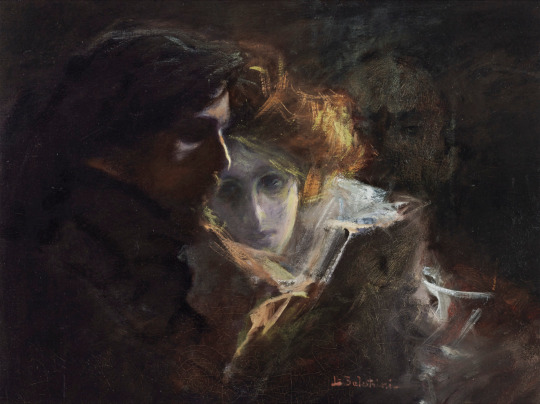
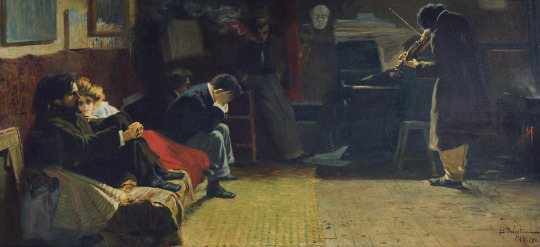

Lionello Balestrieri - Beethoven, Die Kreuzer Sonata. Preliminary studies, the final painting (that brought him fame and fortune) and the artist in his studio, all around 1900.
96 notes
·
View notes
Text

‘Fairy tales from folk lore’ by Hershel Williams; illustrated by M.H. Squire. Published 1908 by Moffat, Yard & Company, New York.
via
65 notes
·
View notes
Photo

Gustav-Adolf Mossa (1883-1971) —Les Mortes [watercolour, gouache and India ink on paper, 1908]
465 notes
·
View notes
Text
I am so glad I happen to have access to one particular book - it isn't mine but it happens to be part of my mother's collection. "Les perversions du merveilleux", The perversions of the marvelous, by Jean de Palacio.

It's not a book you find in your usual libraries, as it isn't printed anymore and now you get it usually in rare bookshops, or quality second-hand bookstores. Just on the Internet a second hand copy - not even of good quality - is worth at least 30 euros. It is a study, based on roughly five hundred literary fairytales published between 1862 and 1922, on how the "marvelous genre", the "genre merveilleux" - aka the fairytale - mutated and evolved in literature during the second half of the 19th century and the fin-de-siècle.
I often talk of the "great century of fairytales", the "golden age of fairy literature" in France, going from Perrault and madame d'Aulnoy's texts in the early 1690s to the publication of Le Cabinet des Fées in the late 1780s. But it doesn't mean fairytales as a literary genre stopped existing in France. It went on throughout the 19th century - but simply as a minor, overlooked, undignified genre, crushed by the dual tendency towards realism-naturalism (rejecting anything magic and fantasy-like as childish) and towards the fantastical (the "fantastique", opposing itself to the "merveilleux" - fantastique was the "right" way to do supernatural). If the late 17th and full 18th century was the "golden age" of literary fairytales, the 19th century and early 20th was more of a "dark age" - but there was a new boom and resurgence of the literary fairytale, a "Renaissance" by the fin-de-siècle, the two last decades of the 19th century and the pre-World-War 20th century. Of course Palacio here goes a bit further and expands his study all the way to the 1860s and 1920s, but it is still a focus on the "fin-de-siècle fairytale" and its "perversion" of the "marvels" of the genre.
Because what was the fin-de-siècle all about? Finding back a magic, an occultism and an onirism lost by the wave of realistic, social and scientific works ; reconstructing magic and marvels in a modern world while also brutally deconstructing it in front of the recent changes in humanity. Digging up the lost past and confronting it to the present - in comparison, rejection, or embrace. But it was also taking the innocent, the beautiful, the good, the fabulous and wonderful, and making it cynical, bored, depressed, cruel, sadistic - and what better choice of material than these childhood tales and "naive fables" of good fairies and happy princes? Twisting fairytales, but also exacerbating them - because the fin-de-siècle was also focused on the beautiful, the richness, the poetry, and it found a kindly echo and friendly cousin within the abundance, the preciosity and the extravagant luxury of these old fairytales. As such it is no wonder that almost all the artistic movements around the turn of the century - symbolism, decadence, all the way up to surrealism - took a great interest in traditional fairytales.
Anyway - this book talks about what the fin-de-siècle did to fairytales, and it is deeply fascinating. The first chapter is "For a fin-de-siècle merveilleux" and establishes both the "marvelous genre" of this era, and the process of "perverting" said marvelous in three specific ways: sequel-tales (continuing the story after the canonic ending), expanded tales (focusing and expanding on a specific detail of the original tale) and "counterfeit tale" (changing the setting, the gender, the iconic item, the social class, the time era of the original story).
There are two chapters dedicated to iconic character-types of the fairytale. One is the Fairy - "La mort des fées", "The death of fairies" - it explores the whole wave of depicting the fairies as a dying race or an extinct species, as the last remnants and survivors of a long-gone world ; but also the presentation of the fairy reinvented as the "femme fatale", the deadly woman, the lethal seductress ; and the symbolism of the fairy as a "woman of letter" - either a muse for the artist, or a storyteller making fairytales, when she isn't the center of a set of "dangerous wordplays" using language itself against reality. The other chapter is about the Ogre - "L'ogrerie décadente", "The decadent ogrery". It explores how the fin-de-siècle uses the ogre as an allegory or a metaphor rather than an actual character, when the ogre doesn't rather become a good and benevolent character, or helpless victim - it also talks of the focus the era had on Little Thumbling, Petit Poucet, and the transformations of the seven-league boots in light of an era of "speed and progress". But most interestingly, it also focuses highly on the "ogress", who was much more explored than the male ogre, thanks to the era's obsession with monstrous women - it talks of the sexual ogresses more like succubuses, of the greedy ogress-like women focused on eating money rather than flesh, and there is an entire section about the short story by Paul Arène "Les Ogresses".
As for the other chapters, they are all centered around onf of Perrault's fairytales. "La belle au lit dormant", "The beauty in a sleeping bed" - how the identity and nature of the fairies was changed to make them dubious and unclear entities ; how the metaphor of the sleep of a hundred years explored the passing of time or the return to the long-gone past ; as well as how there was a tradition of fin-de-siècle authors openly contestating, criticizing or rejecting Perrault's words and affirmations to tell the "real" story of the Sleeping Beauty.
"Miss Blue-Beard, or from the rehabiliation to the decadence" - the way the authors tried to redeem the character of Bluebeard, while also making alternate versions of the tale with a "rise of the feminine power" - from a greater focus and importance on sister Anne to an exploration of Bluebeard's previous wives and his intimate problems with women, passing by the angle of how power goes from Bluebeard to his surviving wife that takes everything from him.
"The metamorphosis of Cinderella": the great focus and fascination the authors had for the famous glass slipper of Cinderella ; coupled with how it became recurrent to depict the "after-marriage" life of Cinderella, turned into a "house-wife".
And finally "The absence of Griselidis" - dealing with the most often ignored and forgotten part of Perrault's three "verse tales".
#fin de siecle#fin de siecle fairytales#decadent fairytales#fairytale analysis#history of fairytales#literary fairytales#jean de palacio#french fairytales#perrault fairytales
24 notes
·
View notes
Text
Franca Florio - The “Star of Italy”
She was nicknamed by her admirers “The Queen of Palermo”, the german Kaiser Wilhelm II called her “The Star of Italy” and writer and poet Gabriele D'Annunzio described her as “a unique woman. A creature whose every movement possesses a divine rhythm” or simply “L’Unica”. She was born Francesca Paola Jacona della Motta dei baroni di San Giuliano, but is known in prosperity as Donna Franca Florio.

The elegant, cultured, lively and intelligent Donna Franca Florio quickly dazzled society after her marriage to entrepreneur and shipowner Ignazio Florio Jr, one of the wealthiest men in Italy. Tall and slender with a 22-24 inch waist and with brilliant green eyes and raven black hair, she was a captivating beauty (if slightly unconventional due to her somewhat dark skin in a time where porcelain skin was valued, even undergoing a painful liquid enmael treatment in Paris in an effort to make her skin paler)

Her wardrobe and sense of style was legendary, with the great fashion designer Jean Philippe Worth calling her the best dressed and most beautiful woman in Italy. Her clothes from the greatest fashion houses and jewelry from Cartier and Lalique were custom made for her, and the outfits worn during her public appearances were lovingly described in papers and magazines. Her jewelry, including a priceless pearl necklace made out of 365 pearls, is said to have outshone even those of the Queen of Italy herself, and was generously given to her by her husband, it is said, as apologies for his frequent infidelities. She did however stop wearing earrings, as they were said to take away from the beauty of her face.

There was however much more to her than good looks and sense of style that made her such a celebrated figure. She was a woman of great intelligence, charisma and artistic taste, and was fluent in german, french and english as well as italian. She had a great ability to make connections with people, which was to great benefit for her entrepreneur husband. She was admired by the Intelligentsia, the artists and intellectuals of her time. Despite her extravagant money spending, she was gifted with great humanity and generosity. She promoted several nurseries, offered trousseaus to orphan girls, made sure her servants children got gifts on christmas, and personally nursed the wounded, and even adopted an orphan, of Messina after an earthquake devastated it in 1908.
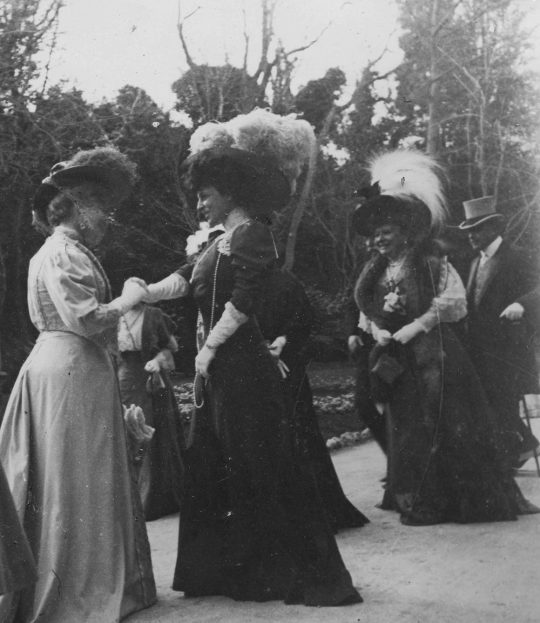
Emperor Franz Josef of Austria was also one of her royal admirers, gifting her with a trumpet for her car specifially made to announce his arrival, causing people to stop and salute the car thinking it was the Emperor himself. Also women admired her, such as Queen Elena of Italy, who she was also a lady-in-waiting to, and writers Matilde Serao and Anna Maria Neera Zuccari, the latter whom held her in such high esteem she would consult her for opinions on her literary work. One polish princess Ghiza was allegedly so enchanted with her after meeting her once at a hotel, she declared her love for her in a long letter and continued to admire her from afar.
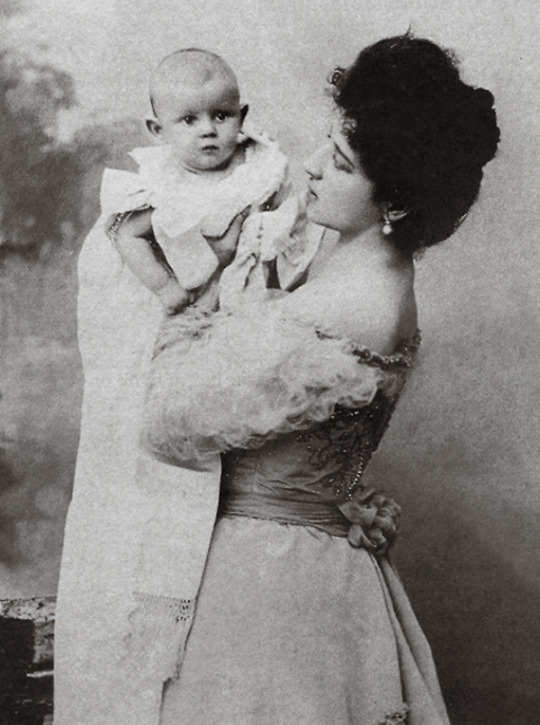
Despite all this attention, she never had any affairs and remained loyal to her husband and family. Beneath the glamourous facade she also suffered great personal anguish with three of her five children dying in their childhood, her husband’s cheating and scandal mongering, and eventually the Florio family’s economic collapse. After the bankruptcy of Ignazio Florio Jr., Donna Franca retreated to the Villa Silviati, belonging to the husband of her daughter Costanza Igiea Florio. She died there on 10 November 1950.
Under her and her husband’s patronage, Palermo blossomed into a cosmopolitan city and their mark is still visible to this day.

#historicwomendaily#history crushes#franca florio#women in history#belle epoque#the belle epoque#donna franca florio#the gilded age#vintage photography#beautiful women in history#edwardian#edwardian era#fin de siecle#italian history#beautiful women#icon#icons#fashion#hulderposts#beauty#socialites#history of italy
77 notes
·
View notes
Text
Sasha Chaitow. Son of Prometheus: The Life and Work of Joséphin Péladan. Theion Publishing, 2022. Deluxe Auric Edition. 432 pages. Fully hand-bound in fine scarlet red leather. Custom red velvety solander box with gold embossing on cover. Limited to 46 hand-numbered copies (#9/46).
Shop link in bio.
instagram
#occult#bookseller#magic#esotericism#occult books#occultism#western esotericism#fin de siecle#Instagram
7 notes
·
View notes
Text

“Workers on Their Way Home”, 1914, Edvard Munch.
#art history#painting#paintings#art#edvard munch#munch#expressionism#modern art#modernism#20th century art#1910s art#norwegian art#norwegian painters#norway#fin de siecle#workers#social realism#expressionist art
234 notes
·
View notes
Photo










Illustrations of life in the year 2000, by Jean Marc Cote, in 1899.
764 notes
·
View notes
Text

Valse macabre, Gustav Adolf Mossa 1906
43 notes
·
View notes
Text
List 5 topics you can talk on for an hour without preparing any material.
I was tagged by @bunny-banana - thank you!
1. 19th century fashion. How it changed over time, the various layers and garments, how the industrial revolution changed manufacturing, the disappearance of regional fashions... God, Common Misconceptions alone would take more than an hour.
2. Detectorists. Beautiful, warm sitcom that explores friendship, disappointment, history, the relationship between people and landscapes. There's a very subtle mysticism all the way through and the music (by The Unthanks and Johnny Flynn) is glorious.
3. Sasha Regan's all-male Gilbert & Sullivan productions. They are SO GOOD OMG. Absolutely magical pieces of theatre: fluid, poignant, beautifully staged, very funny, very queer, gorgeously sung.
4. Fin-de-siècle gothic horror. Go on, ask me about invasion narratives, hypocrisy, and homosexuality in Dracula/ The Picture of Dorian Gray/ Jekyll & Hyde. I actually did an off-the-cuff mini lecture about queerness in Dracula once when we were doing a New Year's Eve party on zoom in 2020 as a forfeit. But I was pissed as a newt so I don't remember any of it.
5. Various poems by Philip Larkin - most specifically Church Going, An Arundel Tomb, and First Sight
Tagging @vinceaddams @mischieffoal @shimyereh @stoportotouch @hegodamask
#honourable mentions to twelfth night and bbc ghosts#and the terror#there are many people on tumblr who are a lot more knowledgeable about it than I am but I still think I could fill an hour!#regency fashion#victorian fashion#19th century#Detectorists#sasha regan#gilbert and sullivan#G&S#fin de siecle#philip larkin
5 notes
·
View notes
Text
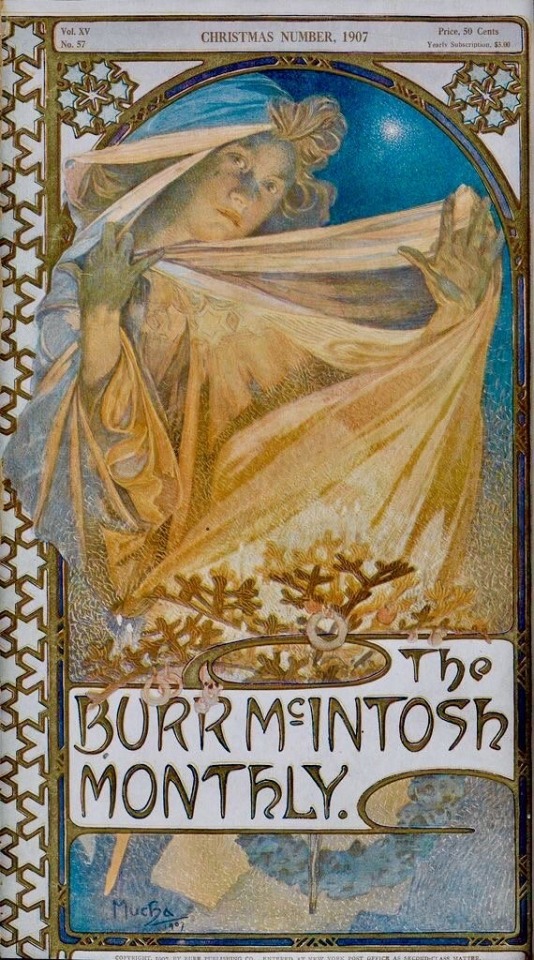
The Burr McIntosh Monthly, 1907.
74 notes
·
View notes
Photo
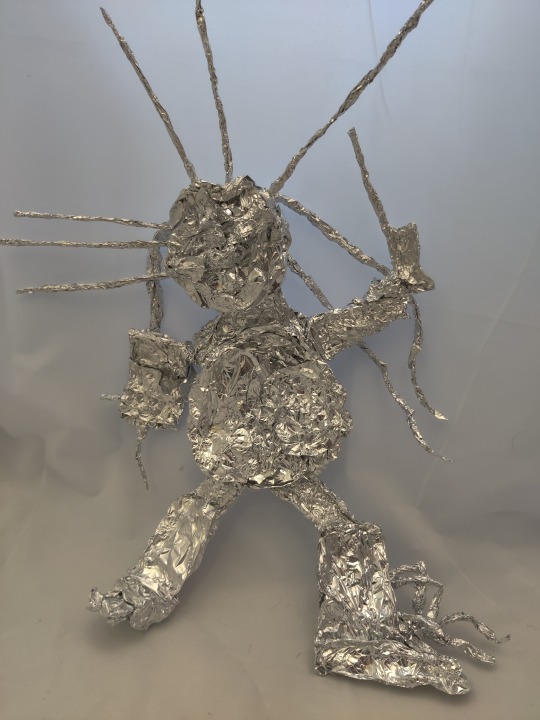
Fin de Siecle by Nam June Paik - Aluminum Foil Sculpture
18 notes
·
View notes
